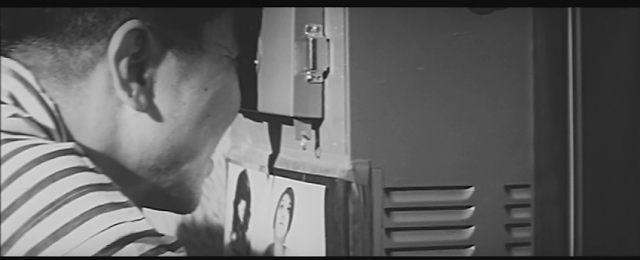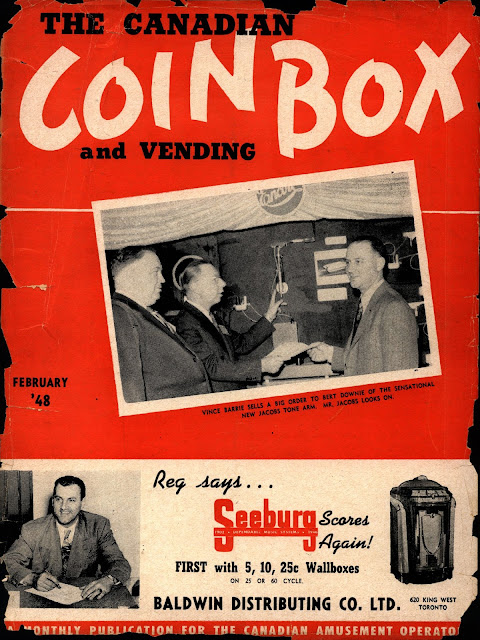There are still a few goodies from my last trip sitting in my back room. I haven't had the time and energy to properly affix them to the wall. Doing so will require moving a bunch of my machines so I can have proper access to rehang a bunch of things. That will hopefully happen over the holiday break, and in the meantime I want to show off a few new arrivals.
Rollygame
 |
| Rollygame |
I am very excited about this game! It simulates playing baseball, in a manner. The Corinthian craze began in Japan in the early 1930s. Rock-Ola's World's Series came out in 1934 and it and a few
other games had copies made in Japan circa 1934 onward. We know that
最新式野球ゲーム (state-of-the-art baseball game) came out sometime between 1934 and 1938, that game bearing the closest World's Series resemblance.
It is fair to estimate Rollygame as being "late 1930s", but currently we do not know the maker. It could have come earlier, as baseball has been popular in Japan for over a century and Rock-Ola was not the only company to create table games with this layout, but we know they were the most famous.
The game simulates innings in baseball. Using a stick or flicking the ball with your finger, you fire the ball up the right channel onto the playfield. The board has carved wooden teeter-totters that help advance the balls around the bases automatically.
Rules I am using: If there is ever an "overrun", where 2 balls end up on a single base, one ball placed on the preceding base. If an overrun does not double up a base, I am allowing it. (think of errors that allow a runner to grab an extra base!) This doesn't happen too often.
Let's look at the writing on the board:
left side: ボール (ball)
フライ (fly)
ゴロ (grounder)
center: D.P. (double play)
ヒット (hit)
right: 空振 (swing and miss)
ファウル (foul)
見送 (strike but no swing)
upper: ギダ (sacrifice bunt/fly balls)
note: this is written ダギ on the playfield. Before WW2 text was written right-to-left.
When 3 balls accumulate on the left channel, the 4th "ball" results in a walk: the ball advances on base.
When 2 balls accumulate on the right, the 3rd "strike" results in an out.
When D.P. is hit (double play) I count that as an 2 outs: the ball that landed there, and I remove the batter on 1st base, or the next person on base if none are on first. (If there are no balls on base, I count it as a single out.)
When you get a run or an out, clear the balls from the playfield for the next batter. After 3 outs, your competitor gets an inning at bat.
Japanese Rolldown
 |
| Japanese Rolldown table |
Despite the name, the "Japanese Rolldown" was a twist on
Japanese rolling ball that was invented in the USA. It took a game of skill and turned it into a game of chance: instead of rolling the balls by hand, the player would simply lift the hinged bucket at the end, sending all 8 balls down the playfield simultaneously.
The holes on the playfield are approximately 1.5" in diameter, though wider on the holes with cracks. I have a set of 1 7/8" aramith billiard balls that I had bought from the Alouette warehouse in Montreal a few years ago. Eventually I might want to try bouncier 1 3/4" balls, so just 1/8" smaller diameter, though it ostensibly plays fine with the balls I am using.
I am unsure what year it's from, but the the "50c to play for 3rd coupon" written on it suggests it was being used later than the 1920s. (When the Japanese rolldown arrived in the early 20th century, carnival games seemed to be 10 cents in the USA. We see this in the early 1920s too.) I assume that the "50c" price is a discount to entice a player with 2 coupons to continue rolling for a 3rd one to get a prize. Carnival games would be exposed to the moisture of the air and sunshine, so I am not too surprised to see the cracking there.
This is hand-painted and could have had the pricing updated. The writing about coupons looks like it had been added at a later date, though the green numbers look original. The upper green numbers say "coupon", and the bottom ones have what looks like "MP" on them, probably meaning "Medium Prize", but for the current iteration of the game it probably just awarded a coupon, as per the text on the left-hand side.
 |
the scoring instructions section
|
Note how there is a fanciful yellow decoration at the center, top. There is also one at the bottom, center, but it was covered by the "50c to play for 3rd coupon" banner.
This also leads me to believe that perhaps a 29 might have had a conciliatory prize, like maybe free game. Not any more!
Perhaps the green numbers are all original and there was a Medium Prize and a coupon system? I am not sure, I will have to find other examples to check against.
From the
Bunco Games To Beware Of compilation article, here is a 1924 newspaper article on how the operator can scam people on the Japanese Rolldown: (note: the author refers to the legitimate game of rolling ball as 'Japanola' and 'Japanese ping-pong', two alternate names)
 |
1924-11-16 Dayton Daily News
|
The alternating arrangement of numbers on the grid (1-6, 6-1) makes it super easy for an operator to deliberately move a ball from one row to the next while counting, immediately adding or subtracting 5 points to the total in a single move.
This seems to be a far too devious move once we consider the math: At the start of the game we have 48 holes (6x8) and we roll a ball and assume there is an equal chance the ball will land in ANY available hole. All numbers 1-6 are represented equally.
After that first roll, there are then 47 holes available for the next ball, and there is a lesser chance you will hit a pocket of the same value as the first roll, since there is one less of those numbers available. And so on. I did not know how to represent this mathematically, so I wrote a program to do this for me and ran is 10 million times.
 |
| distribution of totals when 8 balls are tossed with equal odds to hit any available hole |
Playing 10,000,000 games we had the following results:
- Red numbers: 4838, ~0.05%
- Green numbers: 156095, ~1.56%
- the yellow number 29: 856894, 8.57
Some jurisdictions had laws against the Japanese Rolldown since it was considered gambling. In those territories, players would be asked to roll the balls one at a time instead of releasing all 6 at once, thus turning it more into a game of skill. As the Bunco article above explains, in cases like that a good showman can use the tension to distract a player and alter the ball layouts.
That probably would not have occurred on this table, since many carnival tables are 15"-20" longer. This version is way more portable, but the balls are closed to the eyes of a suspicious player.
You would not need to manually cheat the player though, the odds are thoroughly stacked against them. Since the math is simpler with constrained numbers, the odds of shooting an 8, 9, 47, or 48 is about 0.000603% so there's a solid chance you'd never see those numbers come up in an entire lifetime of operating this game at a carnival.
The 6-ball board we see in the Bunco Games To Beware of article would be far more statistically sane. This board, with 8 balls, is even more of a sinister con.
I also picked up this marquee for 1978 The Driver - ザドライバー by 関西精機 (Kansai Seiki — Kasco). What it lacks in graphic design it makes up for in "being by Kasco", which just makes me happy.
 |
| marquee from The Driver |




















































